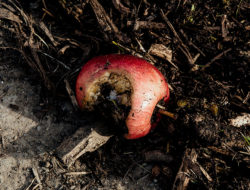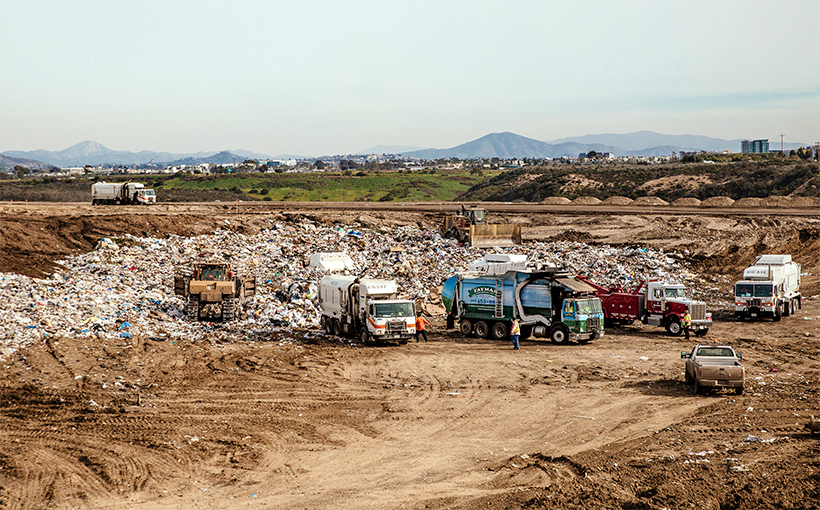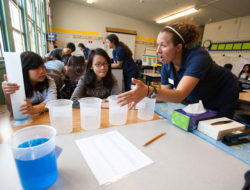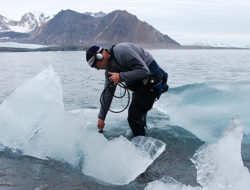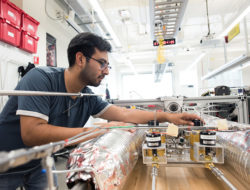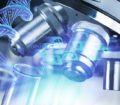Out of sight, out of mind. It’s a luxury afforded by the modern landfill. Thanks to today’s advanced waste-management techniques, we can generate a continuous stream of garbage—about 4.4 pounds per day per person is the national average—with very little afterthought. As long as it’s all placed in the city’s black trash bins and rolled to the curb on collection day, we can count on our garbage disappearing for good.
“It’s almost too convenient to just throw something away today,” says Mark Zu Hone, landfill operations program manager for the City of San Diego. His job is to oversee the intricate workings of the Miramar Landfill, the 1,500-acre site that’s been the final resting place for San Diego’s trash since 1959.
Yet Zu Hone knows, perhaps better than anyone, that our garbage never really disappears. While much of his work entails making sure our garbage is successfully out of sight, he’s just as focused on what’s happening underground, after the trash is buried. That’s where the engineering magic of the landfill begins.
But first, let’s focus on the process we can see. Each and every day, roughly 870 garbage trucks head to the landfill after completing their residential and commercial routes. One by one, the trucks reach their destination—at the intersection of Convoy Street and Route 52, just south of Marine Corps Air Station Miramar—and follow a winding path that leads down to the face of the landfill. Hundreds upon hundreds of garbage bags, including yours, topple out of the back of the trucks into a growing pile.
For a landfill that takes in nearly 910,000 tons of trash a year (the equivalent of almost 5 million pounds per day), you may be stunned to see that the area of exposed garbage isn’t really that big. At about 300 feet wide and 20 feet long, the open “dump” area is smaller than a football field. This area is continuously compacted by Caterpillar trucks until it fills up, then it’s covered with dirt and a new layer begins.
You’ll also see that there’s no special process for separating out the items that should have been recycled but were thrown away instead. Cardboard cereal boxes, aluminum cans, plastic water bottles—they’re mixed right in with expired foods, used paper plates, diapers, and other non-recyclables that fill your garbage at home. San Diego’s recycling facilities sort out materials, but the landfill doesn’t.
Once the garbage hits the ground, it’s the start of a multistep decomposition process that ultimately creates large quantities of energy in the form of methane and carbon dioxide. It’s more than enough to power San Diego’s sewage treatment plant, the Metro Biosolids Center, as well as the North City Water Reclamation Plant. Both of these plants are located a stone’s throw—or more accurately, a short underground gas pipeline—from the landfill.
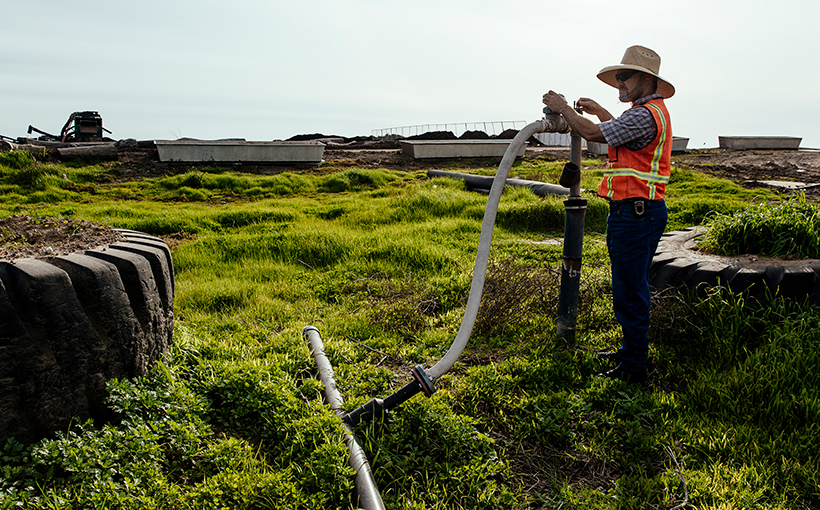
The reclamation plant, home to the Pure Water San Diego Program, is where used water is recycled and purified to become tap water. (This program is also sometimes referred to by the unfortunate moniker “toilet-to-tap.”) So in other words, energy produced by our garbage is cleaning former toilet water so we can drink it. Recycling at its finest.
Even after powering these facilities, there’s leftover energy, which is fed to SDG&E and the neighboring Marine Corps station.
But how is all of this energy—15 megawatts worth, enough to power 10,000 residential homes—coming from our garbage? A lot of it has to do with food, the most common substance thrown in the trash.
Ray Purtee, the landfill’s senior mechanical engineer, says that once a section of the landfill is fully compacted and sealed, the decomposition process kicks off. For about a year, aerobic bacteria eat away at the garbage, consuming all of the trapped air. Once the oxygen runs out, anaerobic bacteria take over. They eat anything organic: cotton, paper, cardboard, food. And as a byproduct, they release methane and carbon dioxide, along with traces of many other elements.
“Every day the landfill grows, that’s more energy to manage,” Purtee says.
Fluids help this process along. The “liquid stew” that is the combination of all things juicy in the dump recirculates through a network of pipes. Valves placed throughout the landfill’s sealed areas suck up the gases and divert it for energy.
Landfills produce energy for around 40 years after they’re sealed, so if Miramar operates until 2030, as planned, we’ll be sucking energy out of it until 2070.
“After that, methane quality drops,” Purtee says. Then, rather than diverting the energy for productive use, an enclosed 1,500-degree combustion process known as “flaring” destroys 99 percent of whatever chemicals and gasses are left over. Flaring stations are scattered throughout the older areas of the landfill.
When a landfill is truly “dead,” it can be covered and used for other purposes. For example, Route 52 is built over one of the first phases of the landfill. But even then, gasses can unexpectedly arise—which is why driving on that highway can feel like a roller coaster.
So, with organic materials like food and cardboard helping to create so much energy, why is there such a focus on encouraging residents to compost?
First, a sizable percentage of the methane created through decomposition is never captured for energy—and some of those gases escape into the environment. Methane is one of the most potent greenhouse gases, and landfills are the third-largest source of methane emissions in the country, according to the Environmental Protection Agency. The city hopes to achieve an 80-percent capture rate of landfill gases by 2020. But individuals can be part of the solution by doing a better job of diverting their organic waste, says Renee Robertson, supervising recycling specialist for the city.
“If the Miramar Landfill operates until 2030, as planned, we’ll be sucking energy out of it until 2070.”
“Keeping organics out of the landfill in the first place is really the best option,” she says. “People say it’s biodegradable, so they throw it away, but there are better uses for that.”
In the landfill, organic materials also combine with various toxic waste elements. Because of this, the materials never disappear cleanly into the environment as they would with composting.
Robertson, who has worked on extensive waste-characterization studies that pinpoint exactly what San Diegans are throwing away, says that while our overall recycling habits are pretty good when compared with other cities, the data shows that most of what we’re putting in the landfill can be recycled or composted.
“What the data doesn’t tell you is why people are putting it in the trash,” she says. “Those are the habits we need to change.”
After 2030, when the Miramar Landfill is projected to run out of space, it’s not yet known where San Diego’s garbage will go. Possibilities include using space at the Sycamore or Otay landfills, which are located in San Diego County but not run by the city; creating a new landfill; or transporting garbage to remote disposal sites, as Los Angeles does with its trash. Meanwhile, the city pushes forth with its “Zero Waste” program, which calls for diverting all trash from landfills by 2040 by increasing recycling and composting rates.
To accomplish such a monumental goal, our relationship with garbage must shift. Zu Hone says an important first step is to visit the landfill and see for yourself the efforts required to manage our society’s waste.
“It’s important to have some level of understanding of the impact of our habits, and see how our municipal solid waste is managed in an engineered landfill,” Zu Hone says. “It’s not just a dump. We don’t just throw trash on the ground and walk away.”
Tags: Energy, Engineering, Environment, Features, Garbage


